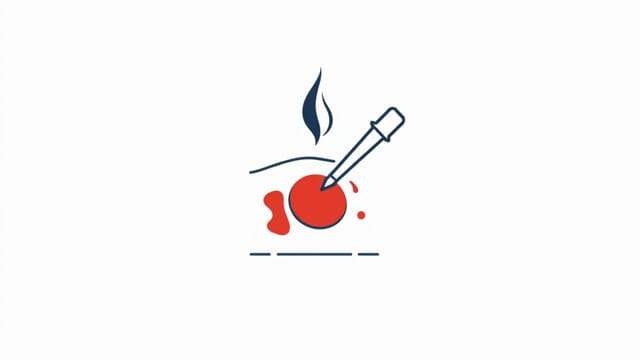In emergency situations where proper medical care is unavailable, some people consider cauterizing a wound to stop bleeding. This practice, often dramatized in movies and survival stories, involves burning the skin or tissue to close off the wound and prevent further blood loss. However, while it might seem like a quick fix, cauterization can introduce numerous risks. Understanding the consequences, appropriate uses, and alternatives to wound cauterization is essential for anyone interested in first aid or survival techniques.
What Does It Mean to Cauterize a Wound?
Cauterization is the process of burning part of the body to remove or close off a wound. Historically, it was used to stop severe bleeding, sterilize wounds, or even remove infected tissue before modern medicine was widely accessible. The practice can be done using a heated metal object or chemical agents.
There are two main types of cauterization:
- Thermal Cauterization Involves using high heat, such as from a flame, metal rod, or electric device.
- Chemical Cauterization Uses substances like silver nitrate to burn the tissue and seal the wound.
Reasons People Consider Cauterizing a Wound
In high-stress survival scenarios, individuals may think cauterization is a viable last-resort technique to stop bleeding when no other option is available. Media portrayals make it seem effective and heroic, but real-life outcomes are often far more dangerous. The truth is that cauterizing a wound carries significant medical risks and should only be performed by professionals or in extreme emergencies when death from blood loss is imminent.
Why Cauterization Can Be Dangerous
Despite its dramatic representation, cauterization can do more harm than good if done incorrectly. Here are some of the main dangers associated with attempting to cauterize a wound without medical supervision:
- Severe Tissue Damage The intense heat required can destroy healthy tissue, making the wound worse.
- Infection Risk Ironically, trying to sterilize a wound through heat can expose it to more bacteria, especially in a non-sterile environment.
- Poor Healing Burned tissue may delay healing and increase the chances of scarring or complications like necrosis.
- Intense Pain Cauterization is excruciating without anesthesia and may lead to shock.
- Internal Injury If not applied precisely, heat can damage nearby nerves, muscles, or organs.
Medical Contexts Where Cauterization Is Used
In controlled environments, doctors do use cauterization techniques for various medical purposes. For instance, during surgery, electrocautery devices are employed to seal blood vessels or remove abnormal tissue. Nosebleeds that don’t stop on their own may be treated with chemical cauterization. In these cases, the tools are sterilized, the area is carefully targeted, and proper aftercare is provided.
The difference between medical cauterization and emergency field cauterization is critical. The former is highly regulated, safe, and effective. The latter is unregulated, imprecise, and potentially life-threatening.
Are There Safer Alternatives to Cauterizing a Wound?
Fortunately, modern first aid offers several alternatives to cauterization that are safer and more effective. Here are some of the most reliable methods to manage a bleeding wound:
- Direct Pressure Applying firm pressure with a clean cloth or bandage can stop most bleeding wounds.
- Elevation Raising the injured area above the heart level can slow blood flow and reduce bleeding.
- Tourniquets For serious limb injuries, properly applied tourniquets can temporarily control blood flow.
- Hemostatic Agents These are substances like powders or bandages designed to promote clotting quickly.
Basic first aid knowledge can go a long way in preventing the need for extreme measures like cauterization. A well-stocked first aid kit should always include pressure bandages, antiseptics, and clotting agents if possible.
Survival Scenarios and Emergency Use
While medical professionals strongly advise against DIY cauterization, there are rare scenarios where it might be considered the only option. For example, a remote wilderness injury with uncontrolled arterial bleeding and no help in sight might present a situation where cauterization is the last line of defense.
Even then, extreme caution must be exercised. Clean the area as best as possible. Use a metal tool sterilized in fire, then allow it to cool slightly to reduce excessive tissue damage. Aim only to stop bleeding rather than burn deep into the wound. Immediately seek professional medical care as soon as possible.
Psychological and Physical Consequences
Cauterizing a wound without anesthesia can cause more than physical pain. Survivors often report trauma associated with the act. The mental toll of such an experience should not be underestimated. Additionally, improperly cauterized wounds may require surgical correction, skin grafts, or long-term medical care, which may not be available in austere conditions.
Wound Aftercare Following Cauterization
If a wound has been cauterized in an emergency, the following steps should be taken to minimize further risk:
- Keep the area clean and covered with sterile bandages.
- Apply antibiotic ointment to prevent infection.
- Watch for signs of infection such as swelling, redness, or pus.
- Seek medical attention as soon as possible.
Proper wound care can make the difference between recovery and severe complications.
Is Cauterizing a Wound Bad?
In nearly all non-emergency circumstances, cauterizing a wound is a poor choice. It introduces risks far greater than its benefits unless it is performed by a trained medical professional in a sterile environment. Popular culture has glamorized the act of cauterization, but the reality is far more painful and dangerous than it appears on screen.
For anyone concerned about preparedness or emergency survival, investing time into learning real-world first aid skills is far more valuable than relying on myths or extreme measures. Knowledge, training, and access to basic medical supplies are the best defenses against bleeding injuries not a red-hot knife or improvised torch.
while cauterization may have a place in extreme survival emergencies, it is not a recommended practice for general first aid. The risks to tissue, the potential for infection, and the likelihood of poor healing make it a dangerous last resort. Instead, focus on safer, evidence-based techniques for managing wounds and controlling bleeding. When in doubt, always seek professional medical help.
